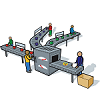LogixPath Integrated Information Management System
|
LogixPath business data object model is an integrated information management system. It enables businesses to efficiently manage large quantities of distributed operational data and their relationships on a single software platform. The key business object model subsystems are: |
|
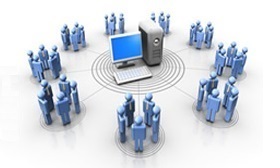
|
|
|
In addition to the key business object model subsystems, LogixPath software also provides business management fundamental modules which facilitate the general business operations. The key modules and capabilities are: |
|

|
|
LogixPath Business Model Subsystems
Integrated Product Information SubsystemLogixPath business object model is centered with Product. Other product related business object types are related to Product. They form an integrated Product Information Management System. All types of business elements support search, listing, and sorting. Each type of element can be searched based on the criteria unique to this type of element. For example, purchasing price can be searched by Product, SKU, Vendor, etc. In the element list view, users can re-sort the result data using one of the element attributes in ascendant or descendant order. |
|
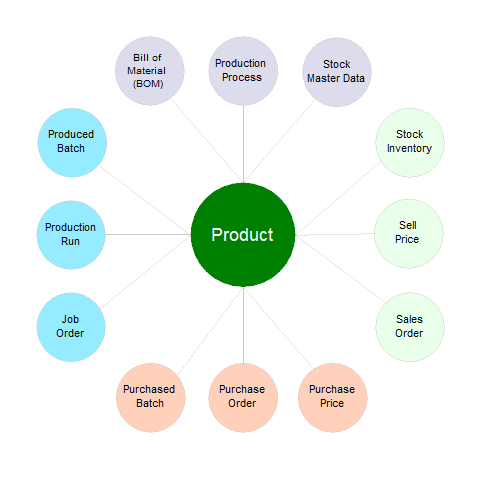
|
|
|
The software provides easy to use tools for users to create and edit these relationships. In a business element detail page, users can view related business elements and navigate between each other. In the product detail page, user can view all the business elements related to the product. Here is an example: |
|
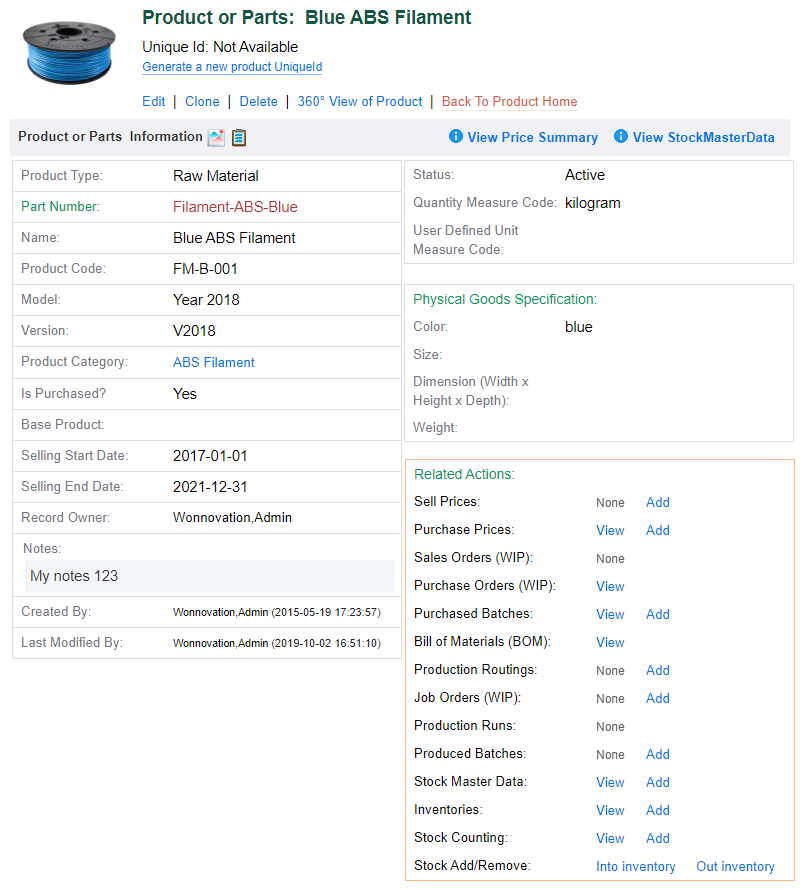
|
Integrated Customer Information SubsystemCustomer is another center of the business object model. Any product sales transaction is related to a specific customer. In addition to the Sales Order object, there are other LogixPath business objects which are related to a Customer. These relationships form an integrated Customer Information Management System. The company detail page provides a "360° View as Customer" for the company. It displays the sales orders associated to this company, payments received from this company, stocks sent to this company, etc. |
|
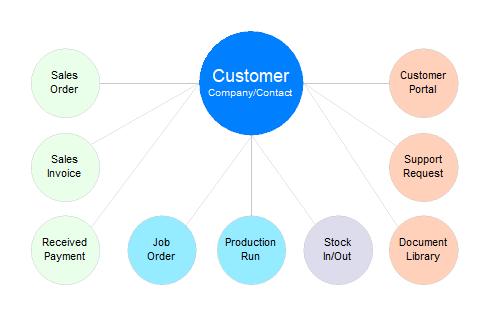
|
Integrated Vendor Information SubsystemVendor is another pivotal business object in the LogixPath application. Any parts and material purchasing is related to a specific vendor. In addition to the Purchase Order object, there are other business objects which are related to a Vendor. These relationships form an integrated Vendor Information Management System. The company detail page provides a "360° View as Vendor" for the company. It displays this company's product or material purchase prices, purchase orders placed with this company, stocks received from this company, etc. |
|
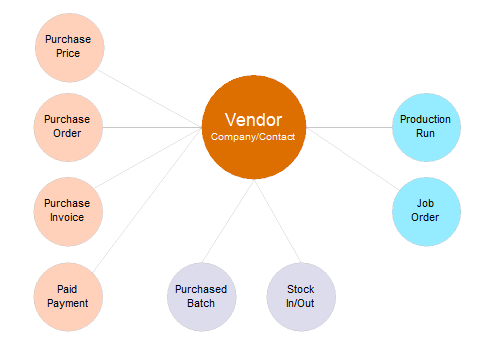
|
Project Information Management SubsystemLogixPath Project can be a "container" of business elements, such as sales orders, purchase orders, job orders, etc. Users can use projects to categorize business elements in order to reviewing the business operations status and performance from an overarching perspective. |
|
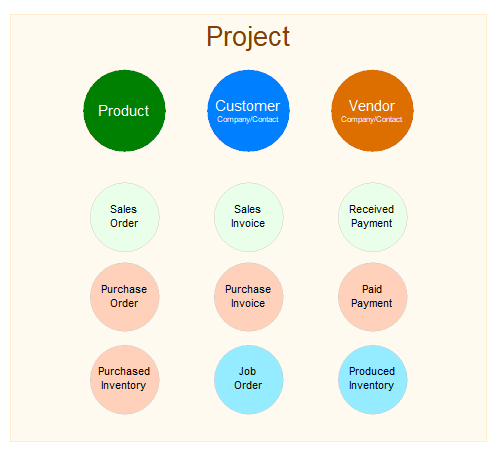
|
General Business Software Modules and Capabilities
Data Access ControlLogixPath software implemented role based data access control mechanism. Key business elements, such as company and contact, have individual object level data access control which are configured by the object owners. |
|
Data Export and ImportThe application provides data export and import tools. Users can export/import data to/from commonly used file format files, CSV files and XML files. When a company starts using LogixPath application, it usually uses data import utilities to input initial data. |
|
Document LibraryLogixPath provides a generic online document library feature for companies to store documents online and write articles online. Businesses often need to access documents related to product production specification, inspection instruction, equipment operation guide or manual, etc. Documents can be shared within company login users, or share to the customer portal users. In addition to Document Library, LogixPath software also allows many business elements to attach files. For example, users can attach stock pickup authorization documents to Inventory Stock MoveOut activities; attach job order sheets to job orders; attach material and produced goods inspection reports to production tasks.
|
|
Human Resources ManagementLogixPath business elements related to human resources are primarily designed to support the business operations in sales, purchase, inventory management, production, and customer support. They include company departments, job positions, and employees. |
|
Approval Process Management ToolsFor certain business operations, such as product R&D, compliance conformance required manufacturing, Engineer-To-Order MakeType, or project based customer orders, approval process during the product production or service execution is often mandatory. LogixPath application provides a flexible and comprehensive business process approval mechanism which allow users to design the approval process and define approvers, and execute the approval process. Currently the approval process can be applied to key business process objects, such as production run tasks. |
|
Critical Event Due Date Detection and AlertLogixPath intelligence subsystem automatically detects mission critical business elements' due date and provide overdue alerts or due soon warning. The elements with this functionality are: sales order, purchase order, job order, and support request. Site administrators can set the reminder or warning lead time thresholds for each type of business element with this feature. |
|
Collaboration and Communication ToolsTo facilitate team collaborations within a company, and collaboration between company and customers, LogixPath software provides Object Oriented Collaboration Chat capability. The reason that we call it "Object Oriented" is because this feature enables team members to have a discussion dialog for a specific "Object" or "Event", such as a sales order, a project, a project task, etc. We are going to apply the same design to the collaboration between a company and a company's customer regarding a Sales Order and a Customer Support Ticket. Message Creator can attach images and files along with the message text. Message Creator can designate message recipients so that s/he can send email notification to these recipients. In addition, recipients' user home pages display "You have {N} new messages" alert. A message creator can draft a message, save it with Writing status, continue writing later, and then post it. After post, creator can recall a message within a certain time period, edit it, and then post again. LogixPath software provides message search capabilities. Message creators and recipients can search messages based on Message Text Phrases, Message Creation date range, Message Author, or Message Recipient. |
|
Website Builder and Customer PortalLogixPath Business Website and Customer Portal builder and hosting capability enables companies to build their business website and customer portal. A company's online presence can help a business to present better business images, reach out more customers, increase the awareness of their products, and increase the sales. Businesses can share products, services, and production information with their customers and prospects, and provide online product orders on its website. With fast growing internet technologies, especially the upcoming 5G technology, the world is getting more and more digitized. People within a company collaborate via internet, so does the collaboration between customers and companies. LogixPath Business Website and Customer Portal framework enables businesses to collaborate with their customers online from pre-sales to post-sales. Learn more in the Business Website and Customer Portal overview page |
|
| Business Elements Overview | ||||||||||
| Modules for All Businesses | ||||||||||
|
||||||||||
|
|
|||||||||
| Sample User Home Page |
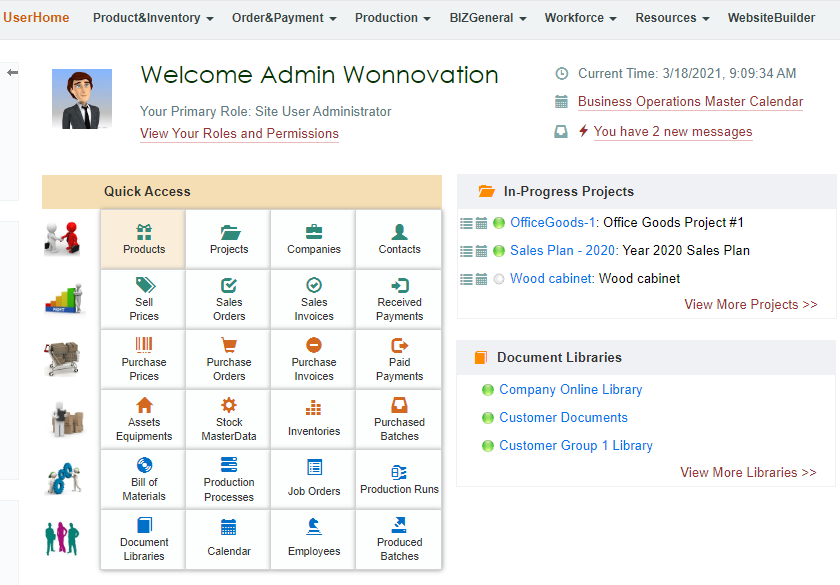
|

